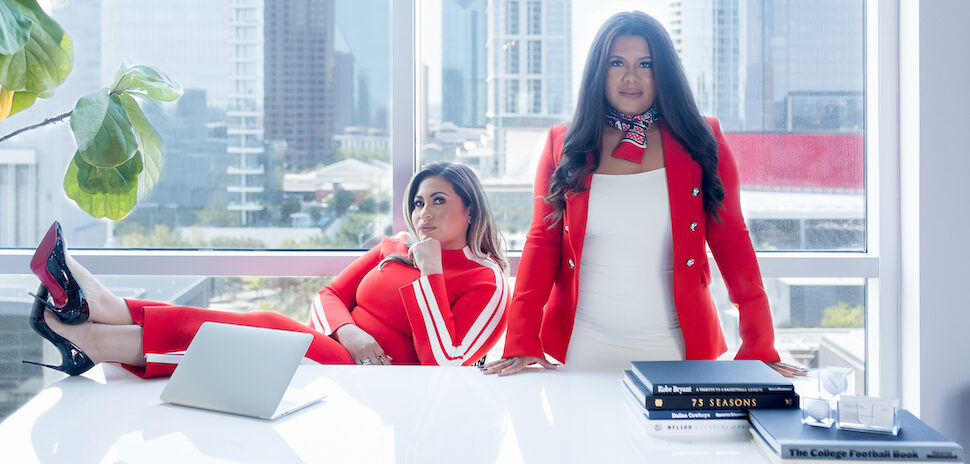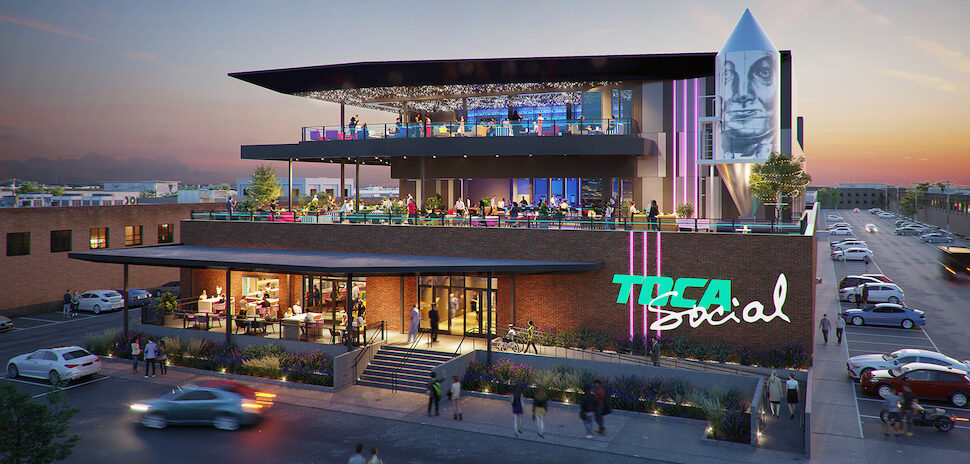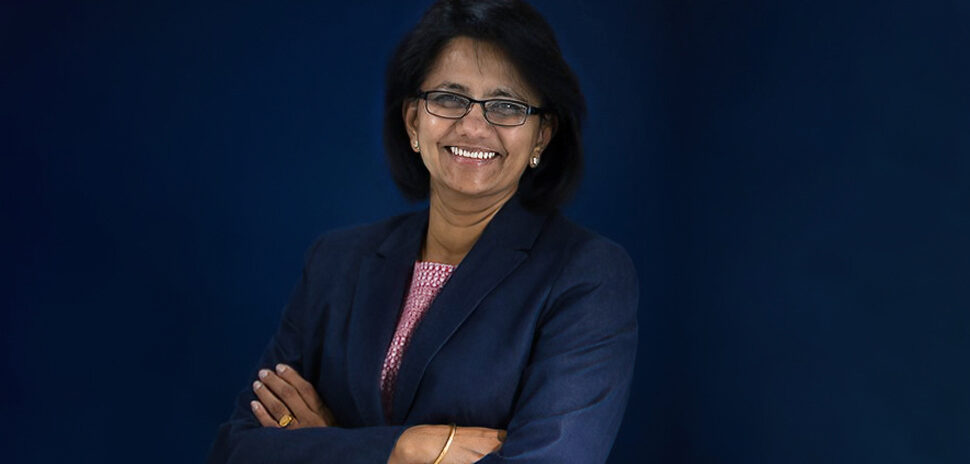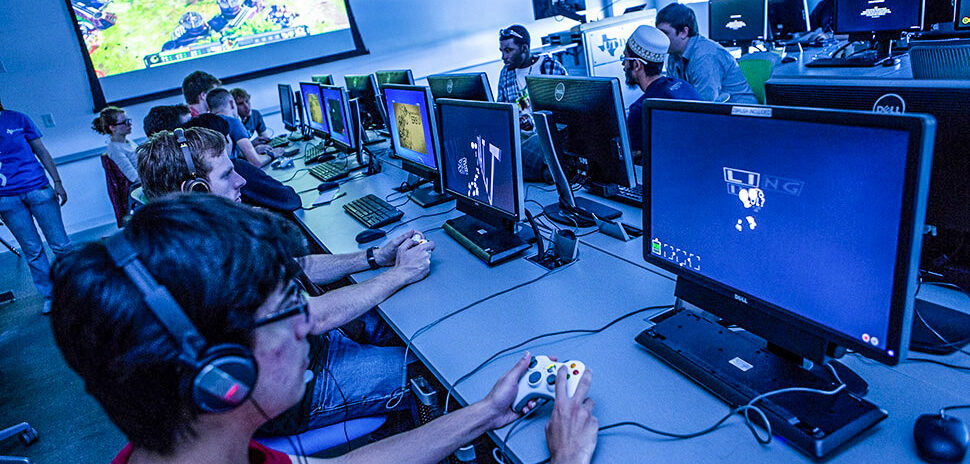SERIES: PART 3
Editor’s note: The 3-Day Big Design conference has kicked off its 11th year and runs through Sept. 22 at Gilley’s Dallas. We thought it was a good time to kick off this multipart series about Design in Big D. The series digs into the scope and depth of the Dallas-Fort Worth UX/UI industry as the region becomes a hot spot for design talent and companies. For more information on the Big Design conference that runs Sept. 20-22, check out our calendar.
Follow the series: Sign up for Dallas Innovates Every Day.
Companies in the region employ thousands of professionals to gain a competitive advantage that comes from looking at the experiences that companies deliver to their clients, employees, and to consumers.
Many of them also look at ways to integrate digital versions of these people (avatars) into their business plans, to serve them more effectively, and to increase interactions (and transactions) with them. As one might guess, a lot of work, creativity, and thought can go toward making that journey. How does that happen? Often, with a single step.
Design with clients, work publicly, build quickly
“The first thing we do with clients, we do discovery sessions with them,” says Michael Griffith, who helped develop the first apps for Bottle Rocket and its founder and CEO — Calvin Carter. Bottle Rocket produced apps for a then-new device called an “iPhone.”
“It’s five to 12 stakeholders,” he says. “They could be the person who owns the brand; it could be a marketing person; definitely an IT guy. There’s collaboration there; beyond that, we collaborate with our clients daily.”
![Bottle Rocket developed the NPR news app for the iPad. At Bottle Rocket, team members at the Addison office of Bottle Rocket display their work on floor-to-ceiling whiteboards to invite collaboration from peers. Clients are engaged in the development process as projects take shape. [Courtesy: Bottle Rocket]](https://s24806.pcdn.co/wp-content/uploads/2018/09/BottleRocket_NPR-on-iPad_970.png)
Bottle Rocket developed the NPR news app for the iPad. At Bottle Rocket, team members at the Addison office of Bottle Rocket display their work on floor-to-ceiling whiteboards to invite collaboration from peers. Clients are engaged in the development process as projects take shape. [Courtesy: Bottle Rocket]
Griffith says Bottle Rocket used that process, working with a hotel corporation, in developing a “journey map” – a timeline that focuses on a specific customer’s interactions with a product or service. Bottle Rocket collaborated with its hotel client to build two types of travelers – or personae – to examine a day and a year in the life of a business traveler and a leisure traveler. The process includes user experience research: What have vacationers or business professionals experienced in their past travels? What frustrations did they experience? What opportunities remain for moments of joy or surprise?
“After interviewing business travelers, you might hear something such as, ‘If I don’t bring back some souvenirs for my son, I’m in real trouble.’ What if a hotel could offer me some Chicago souvenirs, digitally?”
Combine that research with empathy and sprinkle in some digital solutions, and…
“One outcome might be a notification reminding the business traveler that if he or she is running out of time to acquire the souvenir,” Griffith says.
While focus groups are important, Griffith says, it’s important not to let them interfere with innovation.
“If Ford asked (a focus group) how to improve transportation, people would have said ‘faster horses,’” Griffith says, adding that he’s seen focus groups kill good ideas due to a lack of imaginations. Bottle Rocket doesn’t throw hordes of people at projects either. Griffith says teams are small; each member brings a mix of skills to the task. Individuals are encouraged to show their work on whiteboards that cover the walls in Bottle Rocket’s Addison office, inviting interactions from team members.
“Some people even keep their calendars on the whiteboards. It (the use of whiteboards) pulls people out of their shells, and they communicate more. When you see a developer walk up and say, ‘How does that screen work?’, the developer (who is passing by), might say ‘Don’t do it that way, do it this way,’” he said.
Visual training
Accenture’s design and innovation consultancy – Fjord – acquired Austin-based Chaotic Moon in 2015 to help inject gamification and immersive experiences into client business models. Such acquisitions are allowing Fjord to harness the development skills of people including Josh Opel.
On a summer day, Extended Reality (XR) Specialist Opel demonstrated how the training works at Fjord’s Historic Dallas West End office: Virtual Reality goggles give wearers a preview of what a renovated Subway would look like, prompting them to dress subs at the sandwich counter, scoring them for their speed and accuracy. The detail is remarkable, down to Subway’s triangular, white slices of cheese, and the inclusion of a cash register to complete the transaction.
“It’s a commitment to user-first perspective,” says Paige Maguire, design director at Fjord. “The case studies that we do, in Accenture Interactive – they’re very much committed to the new world of technology, from a human-centric approach.”
“We’re really interested in how you can take AR (augmented reality) and create a better user experience,” Maguire says. “It’s visualization that makes your life easier.”
Next generation workforce
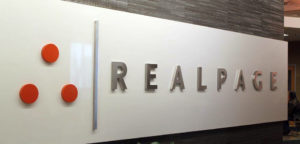
The complete package Developers at Richardson-based RealPage write software that helps manage nearly every aspect of rental real estate experience – from collecting rent, to budgeting, to legal compliance. [Courtesy: RealPage]
Software developers at Richardson-based RealPage focus on developing platforms that ease the work of managing rental real estate, whether it’s commercial retail, residential, or mixed-use. In 2017, RealPage received a $1.3 million boost from the State of Texas’ Skills Development Fund. The grant helped hone the programming skills of about 700 RealPage employees, 200 of which were new hires. Instructors from Richland Community College (part of Dallas County Community College District) provided about 26,000 hours of customized training, half of which involved emerging information technology.
“At the end of the day, we have to move to new (programming) languages,” RealPage CEO Steve Winn told an assembly last year. “Having the university system cooperate with business, in order to advance the educating, really makes a difference.”
Data-driven experience
The Plano office of Walmart Technology opened early in 2018 with the intention of harnessing untold data troves to improve operating efficiencies among the world’s largest retailer’s thousands of stores.
![Walmart Technologies in Plano is putting its vast troves of data to work to help improve the workings of thousands of retail outlets across the world. Leaders see a variety of opportunities, from invoicing to quality control. [Courtesy: Walmart]](https://s24806.pcdn.co/wp-content/uploads/2018/09/Walmart_970_Carlos-Riojas-QA-portrait-@Walmart-Technologies-by-Dave-Moore.jpg)
Walmart Technologies in Plano is putting its vast troves of data to work to help improve the workings of thousands of retail outlets across the world. Leaders see a variety of opportunities, from invoicing to quality control. [Courtesy: Walmart]
Plano office chief Carlos Riojas describes one application for computer vision technology: “Walmart has a lot of cameras in its stores,” he says. “How do we utilize existing assets, with some of the newer technologies coming, to help the stores? We felt like one example would be using the existing asset on the produce aisle to identify when you know maybe fruit has fallen to proactively give alerts (to associates). And that’s challenging, right?”
The “fallen fruit” example is a strong illustration of how data analytics can be used to improve the user experience from an employee perspective.
Riojas says it makes sense to open technology labs like his in the Dallas Region because it’s close to the source of data. “You can be a startup that does artificial intelligence, but guess what, if you don’t have data, you just have a bunch of cool people walking around. What they’re trying to do is find big companies with big data.”
Making travel easier
![Roughly 60 developers build and maintain apps such as TripCase (for business travelers); online ticketing sites for smaller airlines; and PropertyHub, which helps manage hotel ops, e.g., check-in and checkout. [Courtesy: Sabre]](https://s24806.pcdn.co/wp-content/uploads/2018/09/Sabre_as-ssi_data_heavy_design-231x300.png)
Roughly 60 developers build and maintain apps such as TripCase (for business travelers); online ticketing sites for smaller airlines; and PropertyHub, which helps manage hotel ops, e.g., check-in and checkout. [Courtesy: Sabre]
Roughly 60 designers spend their days and nights at Sabre finding ways to make life easier and more rewarding for their (mostly travel and hospitality oriented) clients, sanding the off rough edges of interfaces, and making sure platforms have a uniform feel for companies and innovating.
It takes people with specific skills to make that happen. Among them, Sabre user experience specialists help develop new platforms and think on ways to improve existing products. Design researchers ferret out troubles in software and speak with travel industry professionals to identify industry needs. Another team works to ensure Sabre designers are using the company’s enterprise design language (called Spark) to develop platforms that meet company standards and practices.
“Spark has its own library,” says Bruce Nelson, vice president of design at Sabre’s office in Southlake. “It has actual screen design files and code you can place into your apps.”
Certain interactive platforms must comply to federal code.
“The DOT has stringent requirements for software,” Nelson says. “This even goes with check-in kiosks at the airport,” he says, adding that federal code requires check-in software that works with key commands, rather than a mouse.
Improving interfaces, integrating AI into the client experience
Thomson Reuters is employing UX research and design thinking to reshape the way it does business around its customers. The company’s UX and design practice is using extensive customer research to assist, toward that end, according to the firm. Thomson Reuters has extended those methods beyond product development, into digital marketing, emerging technology, and into improving internal processes that impact its customers indirectly.
![Thomson Reuters is putting its market intelligence to work, applying artificial intelligence, machine learning, and decentralized ledger technology to serve its clients. [Courtesy: Thomson Reuters]](https://s24806.pcdn.co/wp-content/uploads/2018/09/TR-Photo_2018.jpg)
Thomson Reuters is putting its market intelligence to work, applying artificial intelligence, machine learning, and decentralized ledger technology to serve its clients. [Courtesy: Thomson Reuters]
Clients – who include tax professionals and lawyers across the world – are benefiting through improved customer experiences in various ways, including better online interfaces, and by leveraging technologies such as artificial intelligence, machine learning, and decentralized ledger technology. All such projects start by including the firm’s customers into the conversations and collaborating toward building solutions together.
Growing opportunities for all
The region’s growing number of businesses has increased demand for professionals who work in various aspects of user experience. Combined with the growing need for UX experts at existing companies, many start-ups and newer businesses in that sector are swamped with work.
Roughly 80 percent of Dallas-based Dialexa’s client base employ 1,000 or more people, says Doug Platts, vice president of marketing at Dialexa. A majority of Dialexa professionals are involved in some aspect of user experience, from user research to the final product.
“There are lot of great companies here that we can continue to grow with. Every company is a tech company, and we want to help them realize whatever opportunities that technology holds for them. “
“The increasing presence of multi-national companies in Dallas has been a boon to business,” says Jonathan Rosenberg, founding partner of White Unicorn Agency, a Dallas-based branding and design firm that employs 15 professionals in the Dallas Design District and whose clients include Michael Kors, Kimberly-Clark, and Hilton Canopy. “It means there’s more work here.”
Accenture case studies updated on Sept. 26, 2018.
A version of this story was first published in Sept. 2018 in a Dallas Regional Chamber brochure: “Design With a Big ‘D'”.
READ NEXT
PART 1: DESIGN WITH A BIG D
The DFW Experience
Part one examines DFW as a UX hotspot. Today, four out of 10 Texas user-experience professionals work in Dallas-Fort Worth.
PART 2: DESIGN WITH A BIG D
How the Big Design Conference Came to Be
Part two looks at the beginnings of the conference. Big Design co-founder Brian Sullivan shares its origin story.
PART 3: DESIGN WITH A BIG D
Corporate by Design
Part three shares insights for how design pros help companies such as Walmart, Accenture, Bottle Rocket, Sabre, and more gain competitive advantage.
PART 4: DESIGN WITH A BIG D
Leading by Design
Part four covers a few big thinkers who are leading by design at companies such as Capital One, BBVA, Intuit, and USAA. Whether it’s slaying piles of paper receipts at tax time or making shopping an adventure, these Dallas area thoughtleaders are making their marks in their respective industries. The common thread? Dogged persistence.
PART 5: DESIGN WITH A BIG D
Meet 6 UX/UI Experts Delivering Solutions
UX/UI designers and experts are integral parts of many company operations and span across almost every industry. The Dallas-Fort Worth region has no shortage of thought leaders who are helping create the solutions for some of today’s most popular products. Here are six you need to know.
PART 6: DESIGN WITH A BIG D
Norm Cox, Iconoclast: Creating a Legacy in Design
Tap a menu on your smartphone to pay for your coffee, or edit a Word doc. Either way, you can think of Norm Cox. The North Texan was was on the Xerox team that developed the graphical user interface systems that we still use today.
PART 7: DESIGN WITH A BIG D
XR: The Experience Extended
In the service economy, winners will be companies who can best anticipate customer needs and can provide the best customer experience. Enter Extended Reality. Here are four DFW companies making bets on its future.
PART 8: DESIGN WITH A BIG D
A Look Into the Future:
Industry Leaders Say Universities Provide UX Firepower
From developing autonomous trucks to incorporating science and the arts, universities in Dallas-Fort Worth are churning out UX-perts
PART 9: DESIGN WITH A BIG D
Teaching the Next Evolution of UX Design Thinking
Multi-dimensional UX: Preston McCauley has been working to help UX professionals discover new ways to approach the craft.
PART 10: DESIGN WITH A BIG D
Societal Urgency:
UTD’s Cassini Nazir on the First-Person Experience
It would make sense that the best education in user-experience would involve a first-person experience. It’s about finding needs and figuring out how to fill them.
PART 11: DESIGN WITH A BIG D
By the Numbers: Tech Roots Give DFW the Edge in UX/UI Boom
The user experience sector is exploding in Dallas-Fort Worth. That’s a good pairing with the region’s history as a high-tech hotbed.
PART 12: DESIGN WITH A BIG D
Creative Vault: Your Guide to Resources for Designers and UX/UI Pros in DFW
There are plenty of area associations, events, organizations, and educational institutions to help designers brainstorm, commiserate, learn, and hone their skills. Here’s our resource guide to get you started.
#DesignThinking #UX/UI #DesignWithABigD ![]()
Get on the list.
Dallas Innovates, every day.
Sign up to keep your eye on what’s new and next in Dallas-Fort Worth, every day.










![Accenture’s design and innovation consultancy – Fjord – acquired Austin-based Chaotic Moon in 2015 to help inject gamification and immersive experiences into client business models. [Photo: Accenture]](https://s24806.pcdn.co/wp-content/uploads/2018/09/Accenture_970_IMG_5533E_courtesy.jpg)
